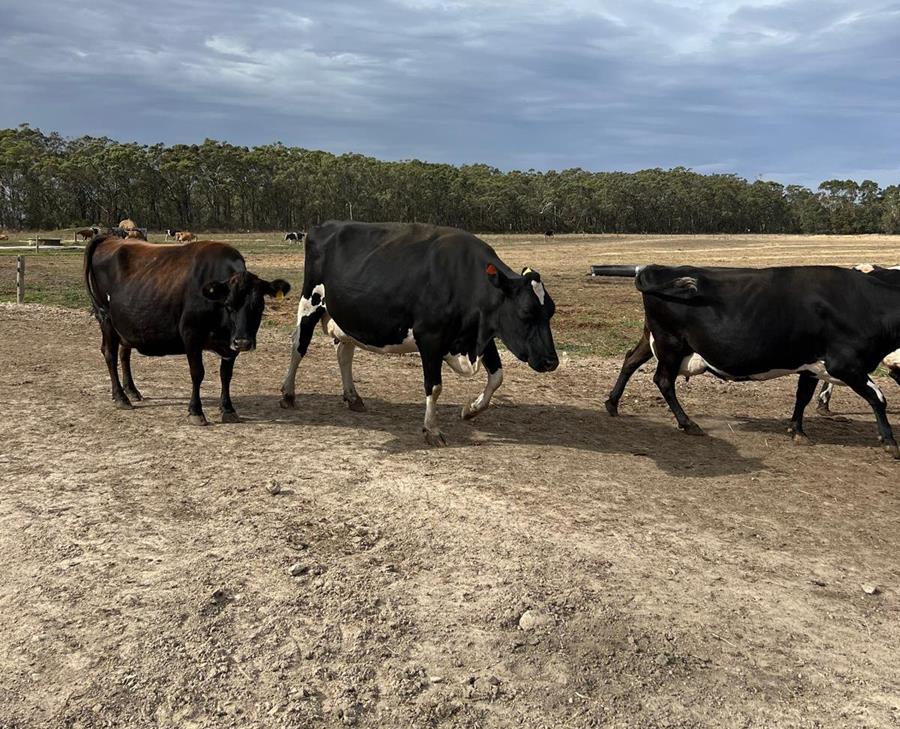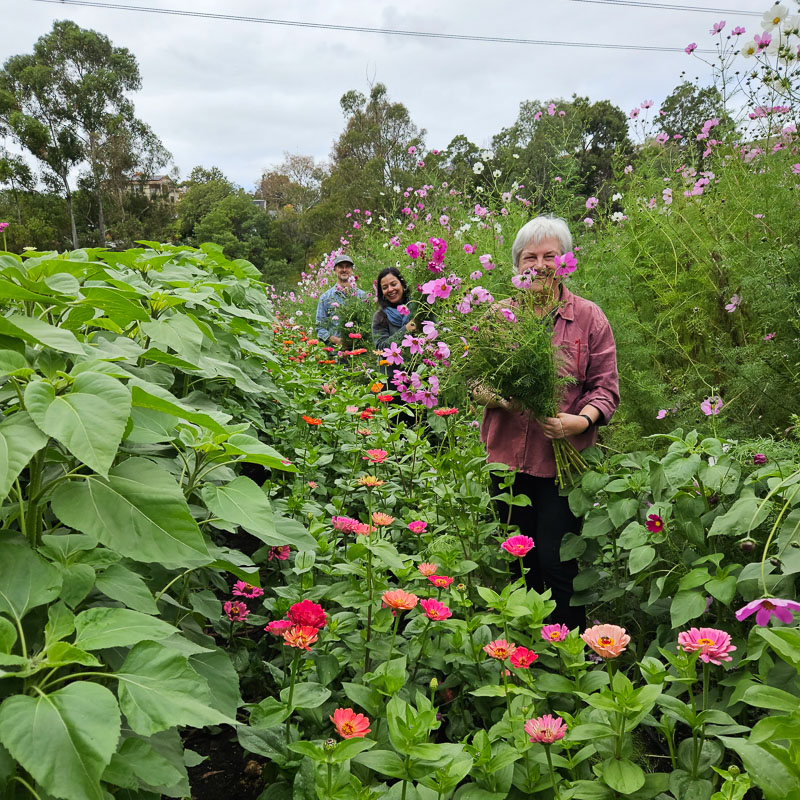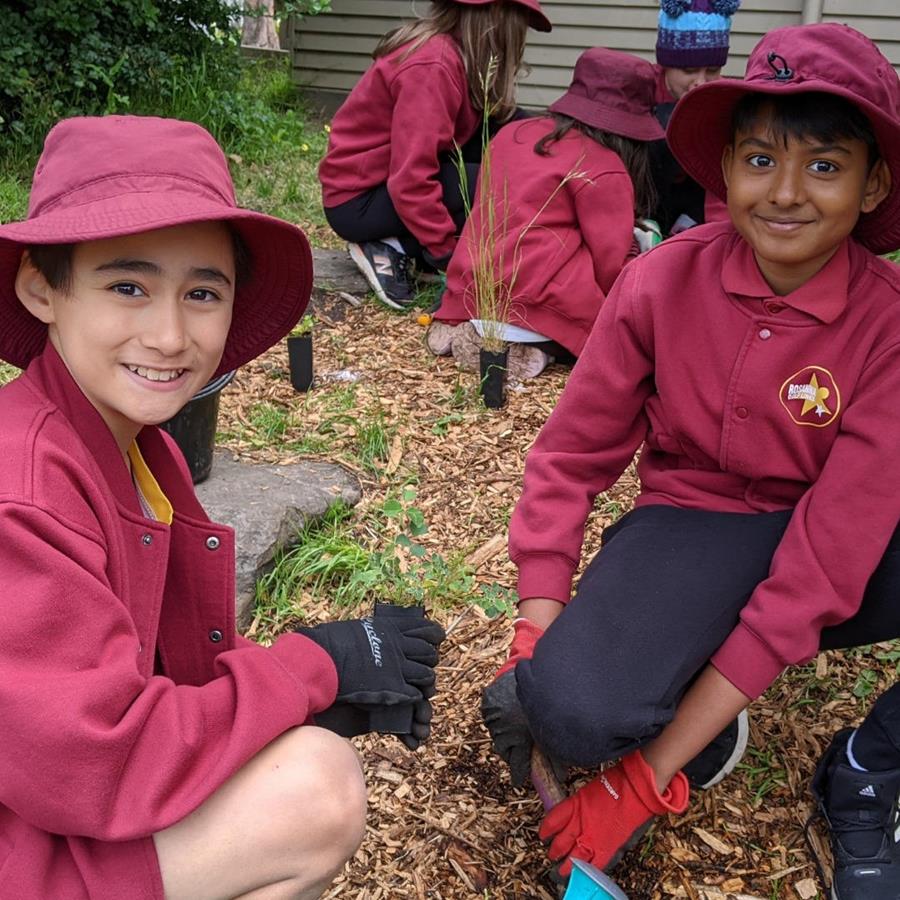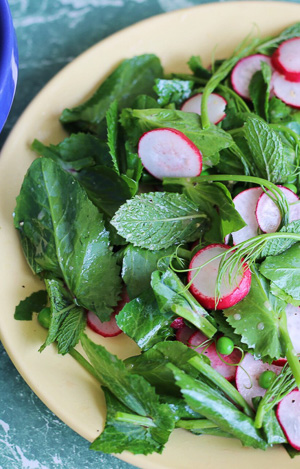
How not to blow up the farm?
When our Fair Food delivery arrives a quick fridge door evacuation of sauce and fizzy water bottles makes way for the wall of two litre Schulz Milk that fills the shelf.
Driven by the presence of two teenage boys, our weekly household consumption sits between 10 and 12 litres of Simon Schulz’s amazing milk.
But back in early March while I was doing our Fair Food shop an “out of stock” appeared on Schulz milk – it was the first sign that all was not right down on Simon’s farm.
Thinking it had to be a mistake I jokingly messaged Fair Food buyer Citu at the warehouse. “No milk! Can this be right?” Citu replied dryly that this was right and this was a drought.
In 1972 Simon Schulz’s grandfather, Hermann, chose Timboon, one of Victoria’s wettest regions, to locate their organic dairy. Normally it’s so wet here that farmers are seldom out of a pair of gumboots.
This week however, looking at a photo of Simon’s cows in a usually muddy race, it appears as if they’re walking on rough concrete.
A local family who have monitored rainfall in South-Western Victoria since 1900, reports that the rain from January to May is the lowest on record.
Simon’s feeding out hay to his cows but no rain equals no grass equals less milk. Simon says this means reduced bottled milk production and a stop to making feta altogether.
Then last week to top it all off in an unfathomably cruel twist, news came about the floods on the mid-North coast washing away entire dairy herds.
I’ve never thought about not being able to get milk before, it’s such a staple staple in our lives.
Yet here we are – climate extremes are drying up our milk supply, bird flu has taken out 2.5 million of our hens in a year and varroa mites have wiped out tens of thousands of our beehives.
And that’s the thing, we take foods like milk, eggs and honey so much for granted that it’s almost impossible to imagine not having them readily available.
For the last hundred years our industrial agricultural ingenuity has generated such a superabundance of food that we’re only beginning to notice that it comes with an inbuilt self-destruct.
Fossil fuels clear forests and plough fields but bring record drought and flood.
80,000 hen sheds give us cheap eggs but perfectly incubate virulent bird flu
Mobile semi-trailor sized apiaries pollinate our almonds but piggyback deadly varroa into beehive after beehive.
I guess the question is will we find a better way to feed ourselves before we blow up the farm?

Starting to believe
CERES is funded through a mix of social enterprise, grants and community support.
For the first time in our history, all of these are under pressure and CERES is under threat.
This year’s annual appeal was launched last week hoping to raise $150,000 by EOFY.
This will give us breathing space while we cut back as carefully as we can.
I just looked and a week after launch we’re almost halfway to our target!!
Whenever I tell someone I work at CERES the reaction is always – I love CERES! I went to CERES with my school or I take my toddler to the playground, or CERES is my sanctuary or I learned to fix bikes, grow food, volunteer, celebrate a solstice or bring my olives or get my food box there….
If you want CERES to keep being this place, keep doing these things, you’ll find the annual appeal page here.
Donating isn’t the only way to help you can;
- share our appeal with your friends and family on Facebook or Insta
- or buy a coffee, your groceries or plants or timber or a workshop from one of our social enterprises
Have a great week
Chris

